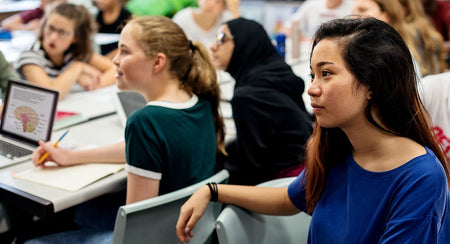We know that trust takes time to build. It also requires experiences—those we share and those we hear from others. Students build a history with us that tells them who we are and whether we can be trusted, and they also tell each other about their experiences and which adults they can trust. In fact, our students usually know much about us, good and bad, before they even enter our classrooms. Of course, not everything students share with each other is accurate, so there are times when we need to build experiences that counter what students expect when they enter our class. At other times, we may benefit from the positive, trust-building experiences past students have had with us.
Beyond taking time to build, trust has multiple dimensions. We might think of trust in broad terms and assume that all trust is the same or that trust in one area means that trust exists elsewhere. Yet, close examination reveals that trust comes in multiple forms and carries varied implications for the relationships we build. The truth is that trust includes dimensions such as the extent to which student can predict how we will act and react in situations, how they can expect to be treated, whether our caring extends to them as a student and as a person, and whether they can depend on us to do what we promise. Let’s explore five crucial areas of trust we need to build and maintain with students if we hope to make a significant and lasting difference in their learning and lives.
First, students want to trust that we are competent. Students depend on us to teach, guide, coach, and support them as they learn. They want assurance that we have the skills, knowledge, experience, and judgment to lead them to success. We build this type of trust by demonstrating our skills and helping students to develop theirs. The processes and procedures we put in place, and the resources we share, reassure students that they can trust what we share, depend on what we advise, and be cautious about what we urge them to avoid.
Second, students want to trust that we will be consistent. They want assurance that they will be treated fairly, regardless of who they are, who their family is, whether they have a history of academic success, or even whether they have had behavior issues in the past. Students also want to know that we have high ethical standards and will be fair and transparent in what we expect and how their progress and performance are evaluated. Further, students need to feel confident that our expectations will remain stable. What we expect one day needs to remain the same the next day. They also seek assurance that we will give their thoughts, ideas, and input the weight and consideration they warrant.
Third, students want assurance that we will follow through when we make a commitment. When we promise to do something, they want to know that we will do it. If we say we will find an answer, complete a task, or secure a resource, students want to be able to depend on us to do just that. If we promise a party or reward for completing a project or achieving a goal, we need to do all that we can to see that it happens. This type of trust also applies to limits we set. If we promise a consequence for unacceptable behavior, students want to know that we will do as we say. Of course, they may try to talk us out of it, but they still want to know that we will follow through with our commitment.
Fourth, students want assurance that we will maintain confidentiality. When students share their secrets, stories, fears, and worries, they want to know that we will not share what they have told us without their knowledge and permission—unless we have no choice as mandatory reporters. Students especially want to be confident that we will not gossip about them or share embarrassing information with colleagues. Above all, students want to know that we will not thoughtlessly hurt them, diminish how others see them, or damage their reputation.
Fifth, students want to be confident in the depth of our caring. Students seek assurance that we care about and know them as individuals. They want reassurance that we will create and maintain an environment that is safe and supportive, free of bullying, discrimination, and harassment. Our patience when students struggle can offer reassurance that we understand that learning can be hard. Similarly, our concern when they hurt can mean more than we imagine.
We need to remember that while trust takes time to build, it can be destroyed in a single minute. When we discover that students believe that we have violated their trust, we need to move quickly to do everything we can to correct or clarify the situation and restore their trust. We don’t have to be strong in every area, but the more ways in which students feel they can trust us, the more they will allow us to influence them—often for a lifetime.















